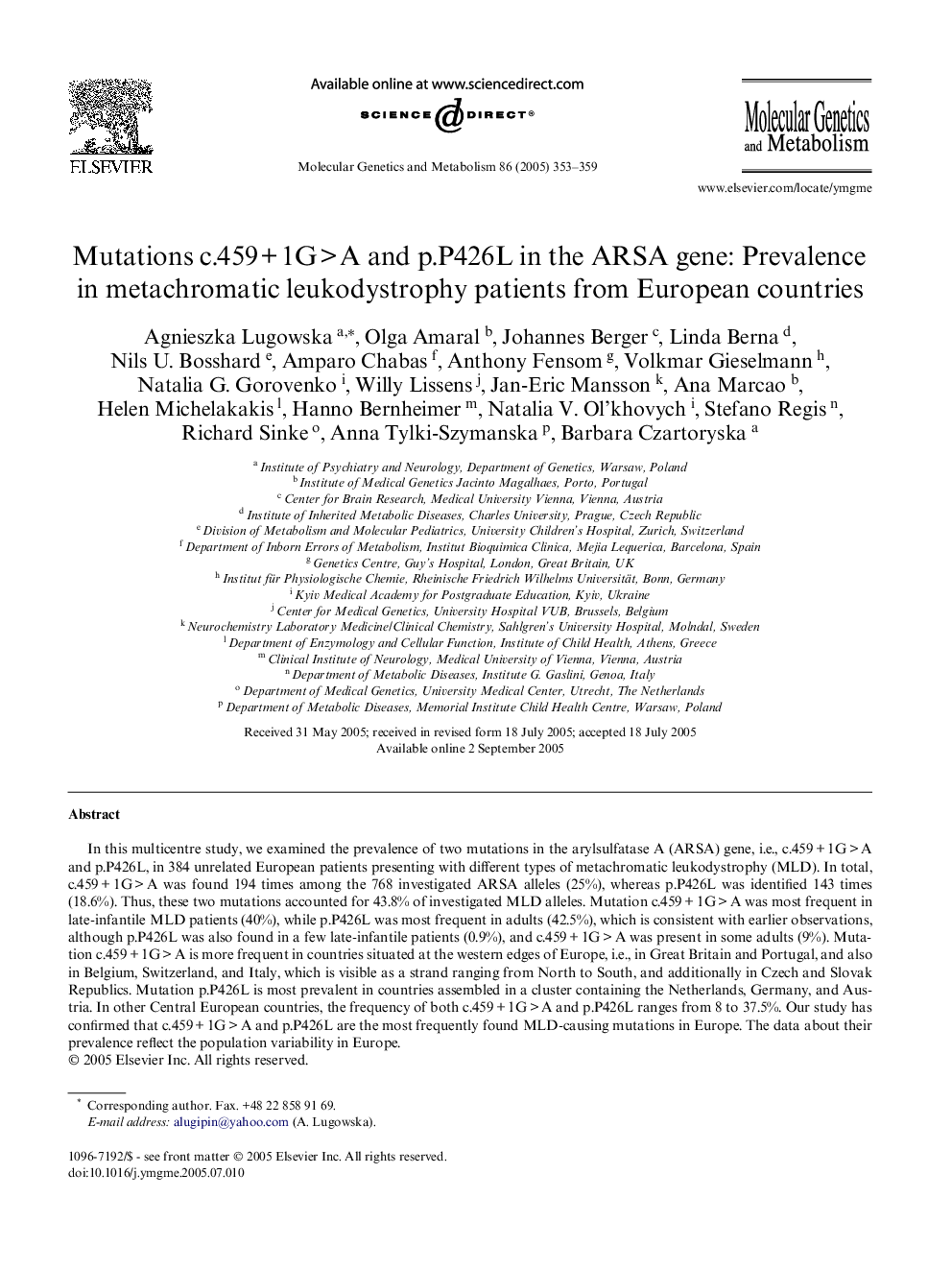| Article ID | Journal | Published Year | Pages | File Type |
|---|---|---|---|---|
| 10834770 | Molecular Genetics and Metabolism | 2005 | 7 Pages |
Abstract
In this multicentre study, we examined the prevalence of two mutations in the arylsulfatase A (ARSA) gene, i.e., c.459Â +Â 1GÂ >Â A and p.P426L, in 384 unrelated European patients presenting with different types of metachromatic leukodystrophy (MLD). In total, c.459Â +Â 1GÂ >Â A was found 194 times among the 768 investigated ARSA alleles (25%), whereas p.P426L was identified 143 times (18.6%). Thus, these two mutations accounted for 43.8% of investigated MLD alleles. Mutation c.459Â +Â 1GÂ >Â A was most frequent in late-infantile MLD patients (40%), while p.P426L was most frequent in adults (42.5%), which is consistent with earlier observations, although p.P426L was also found in a few late-infantile patients (0.9%), and c.459Â +Â 1GÂ >Â A was present in some adults (9%). Mutation c.459Â +Â 1GÂ >Â A is more frequent in countries situated at the western edges of Europe, i.e., in Great Britain and Portugal, and also in Belgium, Switzerland, and Italy, which is visible as a strand ranging from North to South, and additionally in Czech and Slovak Republics. Mutation p.P426L is most prevalent in countries assembled in a cluster containing the Netherlands, Germany, and Austria. In other Central European countries, the frequency of both c.459Â +Â 1GÂ >Â A and p.P426L ranges from 8 to 37.5%. Our study has confirmed that c.459Â +Â 1GÂ >Â A and p.P426L are the most frequently found MLD-causing mutations in Europe. The data about their prevalence reflect the population variability in Europe.
Related Topics
Life Sciences
Biochemistry, Genetics and Molecular Biology
Biochemistry
Authors
Agnieszka Lugowska, Olga Amaral, Johannes Berger, Linda Berna, Nils U. Bosshard, Amparo Chabas, Anthony Fensom, Volkmar Gieselmann, Natalia G. Gorovenko, Willy Lissens, Jan-Eric Mansson, Ana Marcao, Helen Michelakakis, Hanno Bernheimer,
